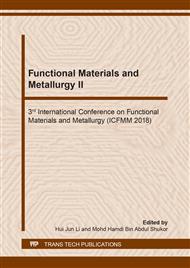p.24
p.30
p.36
p.45
p.51
p.59
p.65
p.71
p.79
Characterization and Design of Honeycomb Absorbing Materials
Abstract:
Honeycomb absorbing materials are anisotropic structural materials. Depending on the size of honeycomb lattices, the absorbent content of the impregnated layer is different, the thickness of the impregnated layer is different, and the absorbing function of the impregnated honeycomb absorbing materials is also different. For the characterization of electromagnetic parameters of honeycomb absorbing materials, this paper adopts free space method for testing, uses CST software for modeling, and inverts the electromagnetic parameters of honeycomb absorbing structures. The absorbing performance of single-layer and double-layer honeycomb sandwich structures was simulated by RAM Optimizer software. The research shows that the height of the single-layer honeycomb absorbing material is 22mm. When the absorber content is 65%, 75% and 85% respectively, the harmonic peak moves slightly to the low frequency electromagnetic wave with the increase of the absorber content, but the absorbing strength decreases with the increase of the absorber content. For the double-layer honeycomb sandwich structure, the difference of absorber content in the upper and lower honeycomb absorbing materials is smaller, and the absorbing performance is stronger. When the thickness of the wave-transparent panel is thinner, the harmonic peak of the absorbing curve moves slightly to the high frequency.
Info:
Periodical:
Pages:
51-56
Citation:
Online since:
July 2019
Authors:
Price:
Сopyright:
© 2019 Trans Tech Publications Ltd. All Rights Reserved
Share:
Citation:


